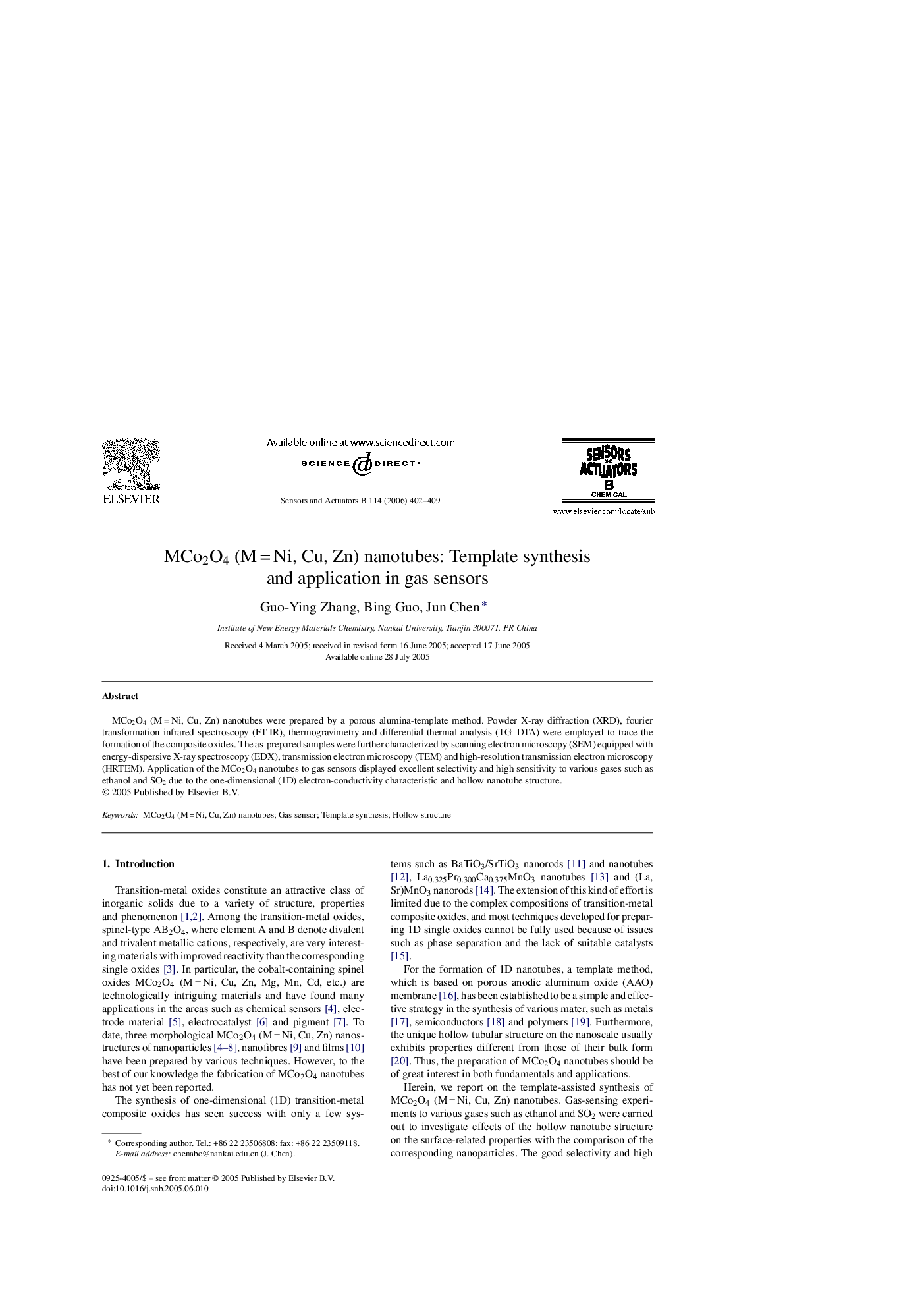| Article ID | Journal | Published Year | Pages | File Type |
|---|---|---|---|---|
| 751786 | Sensors and Actuators B: Chemical | 2006 | 8 Pages |
MCo2O4 (M = Ni, Cu, Zn) nanotubes were prepared by a porous alumina-template method. Powder X-ray diffraction (XRD), fourier transformation infrared spectroscopy (FT-IR), thermogravimetry and differential thermal analysis (TG–DTA) were employed to trace the formation of the composite oxides. The as-prepared samples were further characterized by scanning electron microscopy (SEM) equipped with energy-dispersive X-ray spectroscopy (EDX), transmission electron microscopy (TEM) and high-resolution transmission electron microscopy (HRTEM). Application of the MCo2O4 nanotubes to gas sensors displayed excellent selectivity and high sensitivity to various gases such as ethanol and SO2 due to the one-dimensional (1D) electron-conductivity characteristic and hollow nanotube structure.
